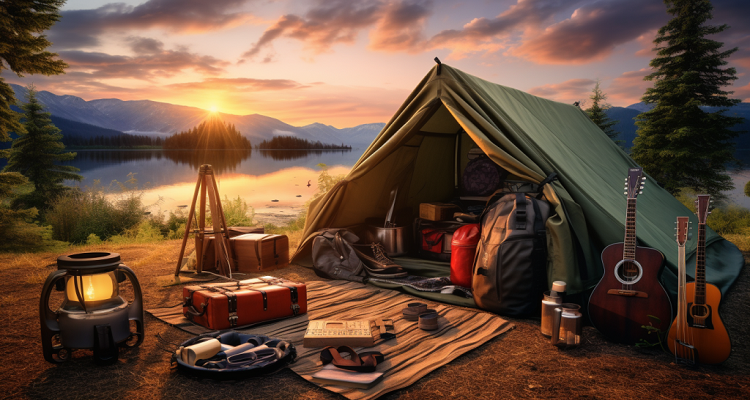For many writers, the blank page can feel as daunting as a sheer granite cliff. Yet step outside into the fresh air, beneath towering pines or along a windswept shoreline, and inspiration often strikes with the ease of sunlight through leaves. On Earnie’s World a place where stories of maintenance, adventure, and life’s practical wisdom converge nature is more than a backdrop; it’s a collaborator. In this evergreen guide, we’ll explore how embracing the outdoors can revitalize your creative process, overcome writer’s block, and help you produce richer, more resonant work. Whether you’re a seasoned freelancer or a weekend journaller, these strategies will reconnect your pen to the pulse of the natural world.
1. Why Nature Unlocks Creativity
Research consistently shows that spending time outdoors reduces stress and restores mental clarity two crucial ingredients for creativity. A 2019 study from the University of Utah found that participants who walked in natural settings scored 50% higher on creative problem-solving tasks than those who walked in urban environments. The benefits include:
- Reduced Cognitive Fatigue: Natural scenes engage the mind gently, allowing overtaxed mental circuits to rest and reorganize.
- Heightened Sensory Awareness: The symphony of bird calls, rustling leaves, and fragrant pines provides fresh material for vivid descriptions.
- Expanded Perspective: Seeing wide horizons and ancient landscapes shifts focus from daily worries to grander narratives.
On Earnie’s own camping trips in the Appalachian foothills, a simple hike through early-morning mist has sparked entire article series on resilience and resourcefulness. By making nature a source of ongoing inspiration, you create a sustainable wellspring of ideas.
2. Planning an Outdoor Writing Retreat
You don’t need weeks on the trail or a luxury cabin to reap nature’s creative rewards just a little planning:
- Choose Your Location:
- Local parks, state forests, or lakeside campgrounds make for low-cost, high-impact getaways.
- Consider proximity to amenities if you need reliable cell service or power.
- Set a Clear Intention:
- Define a writing goal drafting a chapter, brainstorming headlines, editing a draft.
- Balance structured time (e.g., two 45-minute writing sprints) with unstructured exploration.
- Pack Essentials:
- Notebook & Pens: Waterproof or all-weather options (e.g., Rite in the Rain) ensures notes stay legible.
- Portable Power: A small solar charger or power bank keeps your laptop or phone alive for research and drafting.
- Lightweight Gear: A compact camping chair, tarp-shelter, or hammock lets you write comfortably anywhere.
- Minimize Distractions:
- Turn off non-urgent notifications or use focus apps (Forest, Freedom) to block digital noise.
- Inform friends and family of your offline window.
By structuring your retreat with realistic goals and the right tools, you’ll maximize productivity without sacrificing the spontaneity that makes outdoor writing so potent.
3. Essential Gear for Mobile Creativity
Balancing comfort, utility, and weight is key when you fuse writing and wilderness:
- All-Weather Notebook & Pen: Look for tear- and water-resistant pages and pens rated for extreme conditions.
- Tablet or Ultraportable Laptop: Devices under 2 lbs with long battery life (e.g., a 10″ Windows tablet or MacBook Air).
- Solar Charger or Power Bank: A 10,000 mAh unit can recharge a phone twice; panel chargers offer continuous trickle charge.
- Portable Writing Light: Clip-on LED lamps are invaluable for early mornings or dusky evenings.
- Foldable Camp Desk/Tray: A lap desk or fold-out table creates a stable writing surface on uneven ground.
- Durable Backpack: Padded compartments protect electronics; external straps carry tripods, chairs, or hydro flasks.
Investing in the right gear pays dividends: no more wrestling with soggy pages or hunting for outlets behind picnic tables. Instead, you can focus on the words themselves.
4. Journaling Techniques in the Wild
Nature journaling is both observational practice and creative ignition. Try these techniques:
- Sensory Mapping:
- Divide a page into five quadrants sight, sound, smell, touch, taste and record immediate impressions.
- This practice deepens description and hones your attention to detail.
- Quick-Draw Sketches:
- Even simple stick-figure diagrams of a river bend or leaf structure spark memory and metaphor.
- Visual notes can unlock narrative ideas later at your desk.
- Found Poetry:
- Transcribe a line of birdsong or the rhythm of dripping water, then shape it into verse.
- Framing natural cadences as poetry expands your stylistic toolkit.
- Speed Freewrites:
- Set a timer for 3–5 minutes and write continuously no self-editing. Focus on how the environment makes you feel.
- Freewrites often reveal hidden themes or emotional truths.
By combining structured exercises with free exploration, you’ll produce both raw inspiration and polished prose ready for expansion.
5. Incorporating Nature’s Narrative Elements
Writers often borrow from nature’s own storytelling devices. Consider:
- Seasonal Arcs: Use the cycle of seasons as a structural scaffold spring for beginnings, summer for conflict, autumn for reflection, winter for resolution.
- Elemental Symbolism: Water’s flow can mirror a character’s emotional journey; storms can heighten tension before calm.
- Landscape as Character: Treat setting not just as backdrop but as an active force that shapes your narrative rocky cliffs that challenge protagonists or whispering forests that conceal secrets.
In Earnie’s “Trail Tales” series, each essay pairs a personal anecdote with a nature-driven metaphor like comparing a frost-covered meadow to the clarity that follows a creative breakthrough.
6. Overcoming Writer’s Block on the Trail
Even in the wild, writers occasionally hit a blank. Try these field-tested strategies:
- Micro-Tasks: Switch from drafting to editing a previous section, captioning photos, or refining headlines small wins break the logjam.
- Physical Shake-Up: A quick 10-minute hike off your planned path can reset focus and yield fresh ideas.
- Mindful Breaks: Practice a 3-minute breathing exercise under a favorite tree, then return to your notebook.
- Topic Jars: Carry slips of paper with prompts (“Describe the crunch of leaves beneath boots,” “Write a letter to your future self from this viewpoint”). Draw one when you stall.
By reframing block as a signal to shift activity rather than a failure, you maintain momentum even when inspiration ebbs.
7. Balancing Remote Work and Outdoor Passion
As a freelance writer, your office can be anywhere but so can your playground. Maintain harmony by:
- Time-Blocking: Dedicate morning hours to focused writing and afternoons to hiking, photography, or research.
- Weekly Theme Days: Reserve one mid-week “Work in Nature” day where you write from a park, campground, or outdoor café.
- Accountability Partners: Team up with fellow outdoor-minded creatives for joint sessions one writes while the other sketches, then swap.
- Technology Boundaries: Establish “digital sunset” rules at camp no screens one hour before bed to ensure restful sleep and dream-fueling subconscious processing.
These rhythms prevent burnout and ensure your outdoor adventures continuously feed, rather than interrupt, your professional goals.
8. Editing and Refining Post-Retreat
Once you return from the trail, convert your raw field notes into polished content:
- Transcription & Organization:
- Digitize handwritten notes and sketches into a single document.
- Create a folder structure for images, audio notes, and drafts.
- Outline Revision:
- Sift through freewrites and highlights to update your article’s outline add or remove sections based on new insights.
- Sensory Enrichment:
- Revisit sensory mapped notes to sprinkle vivid details throughout your narrative.
- Clarify metaphors drawn from elemental symbolism.
- Peer Review in Context:
- Share drafts with colleagues or an online community (such as the Earnie’s World mailing list) and invite feedback on clarity and emotional impact.
This iterative process ensures your outdoor-inspired draft achieves its full potential.
On Earnie’s World, the convergence of real-world pragmatism and outdoor wonder creates a unique space where creativity thrives. By integrating nature directly into your writing process from well-planned retreats to sensory journaling, from tactical gear choices to post-trip editing strategies you harness the wild as a collaborator rather than a mere setting. The next time your cursor blinks on an empty page, lace up your boots instead, step onto the path, and let the world outside guide your words.



